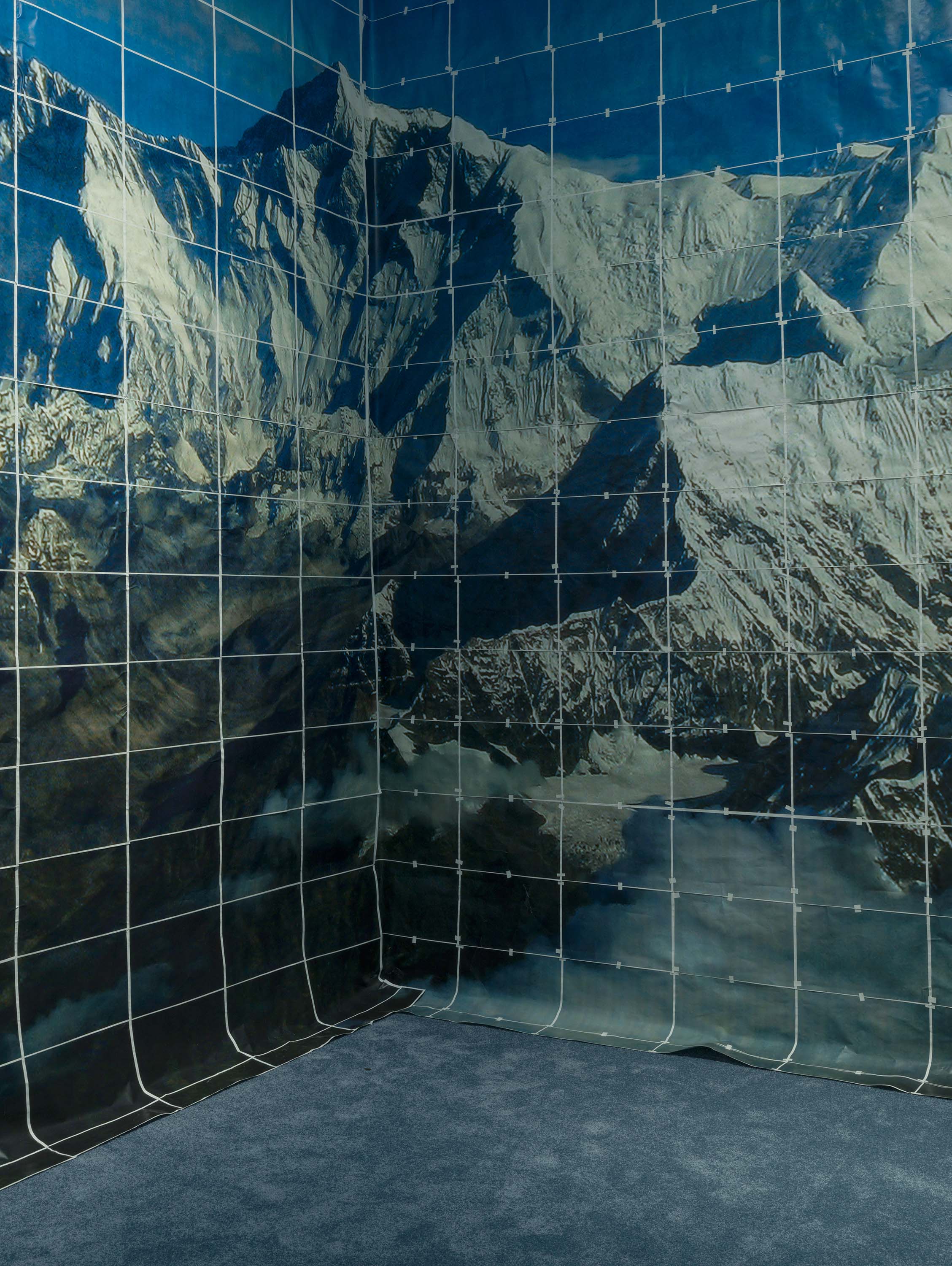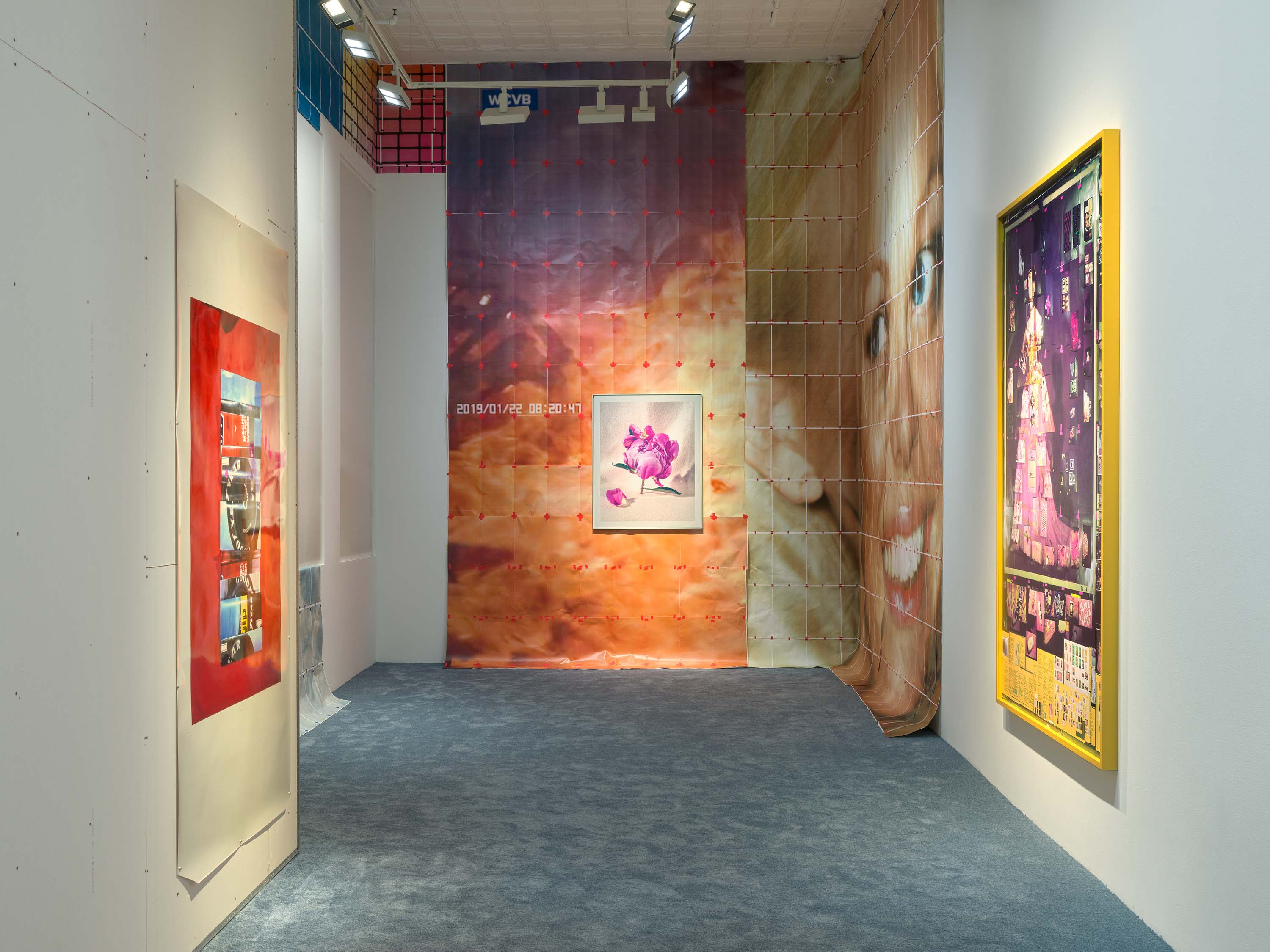
Sara Cwynar, Installation View, 2024

Sara Cwynar, Installation View, 2024

Sara Cwynar, Installation View, 2024

Sara Cwynar, Installation View, 2024

Sara Cwynar, Installation View, 2024

Sara Cwynar, Installation View, 2024

Sara Cwynar, Installation View, 2024

Sara Cwynar, Installation View, 2024

Sara Cwynar, Installation View, 2024

Sara Cwynar, Installation View, 2024
Sara Cwynar: Baby Blue Benzo
52 Walker is pleased to announce its thirteenth exhibition, Baby Blue Benzo, which features work by Canadian-born, New York–based artist Sara Cwynar. This presentation focuses on a new film—for which the show is titled—shot on both digital video and 16mm and projected at monumental scale. To complement Baby Blue Benzo, a series of related photographs will be installed throughout the gallery space.
Engaging with vernacular photography and the moving image, as well as their attendant technologies, Cwynar’s practice—which also includes collage, installation, and performance—explores how pictorial constructs and their related systems of power feed back into real life. In her new film, Cwynar combines newly produced video and photographs with found images amassed in her archive. Baby Blue Benzo's central visual pillar is a replica of the titular 1955 Mercedes-Benz 300 SLR, which is to date the most expensive car to be sold at auction. Throughout the film, the Benz along with the colors baby blue and Ferrari red are leitmotifs that surface again and again—the car, for one, variously appears as a custom-built replica, as a cutout, in photographed reproductions, and as a life-sized copy at the Mercedes-Benz Museum in Stuttgart, Germany. Inserting her authorial presence, Cwynar incorporates filmed representations of herself in the Benz, of hired models and crew, and of friends and collaborators like Tracy Ma, a graphic designer she has depicted in previous projects. This amalgamation of images, all shown at varying scales, is unveiled in a continuous horizontal scroll across an extra-wide screen, a new animation style that Cwynar developed with a video editor.
Sara Cwynar: Baby Blue Benzo is curated by Ebony L. Haynes and presented by 52 Walker.
Sara Cwynar was born in 1985 in Vancouver. She received her BA from York University, Toronto, in 2010, and her MFA from Yale University, New Haven, Connecticut, in 2016. Cwynar has exhibited across North America and internationally since 2012, when her first solo shows were presented at Printed Matter, New York, and Cooper Cole, Toronto. The artist has since presented solo exhibitions including Everything in the Studio (Destroyed), Foam, Amsterdam (2013); Flat Death, Rosenwald-Wolf Gallery at the University of the Arts, Philadelphia (2014); Soft Film, Museum für Moderne Kunst, Frankfurt (2017); Image Model Muse, Minneapolis Institute of Art (2018; traveled to Milwaukee Art Museum); Tracy, Oakville Galleries, Canada (2018); Gilded Age, Aldrich Contemporary Art Museum, Ridgefield, Connecticut (2019); Gilded Age II, Polygon Gallery, Vancouver (2019); Down at the Arcade, commissioned by Performa, New York (2021); Source, Remai Modern, Saskatoon, Canada (2021); Apple Red/Grass Green/Sky Blue, Institute of Contemporary Art, Los Angeles (2022); and S/S 23, Foam, Amsterdam (2023), among others.
The artist is represented by Cooper Cole, Toronto, and The Approach, London. She lives and works in New York.